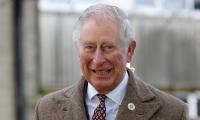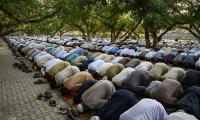The debate over China’s economic model has re-emerged as the trade war between the US and China intensifies. It had previously emerged during the 2008 economic crunch as the country’s fast recovery from the economic slowdown surprised many around the world. However, the US administration is not happy with China’s increased economic control and involvement of the state in its economy.
The US ambassador to WTO, Dennis Shea, launched a blistering attack on China in a meeting of the trade body held in July. Shea said, “China has not been moving toward a fuller embrace of market-based policies and practices since it joined the WTO in 2001. In fact, the opposite is true. The state’s role in China’s economy has been increasing. For China, economic reform means perfecting the government and Communist Party’s management of the economy”.
China calls its economy ‘socialism with Chinese characteristics’, whereas many economists call it state capitalism. For many socialists around the world, the Communist Party of China (CPC) has betrayed the working class and restored capitalist economy in the country. Hence, it is a market-based capitalist economy. On the other hand, some economists consider it a socialist market economy.
Whatever tags one likes to put on it, the reality is that China’s economy has outperformed all the other economies in the world in the last three decades. It has established its superiority and effectiveness over the free-market and neo-liberal model, and has been enjoying an uninterrupted high growth rate since the 1990s.
In my view, the Chinese economic model is a complex phenomenon. The country’s economy is in a hybrid state. It is a unique form of state-capitalism and is a mix of Keynesianism and market economy. China’s economy is neither a classic market economy nor a state-capitalist economy. The problem is that we haven’t been able to understand the process of its economic transformation from a planned socialist economy to a more open state-capitalist economy.
The process of economic reforms in China is still ongoing. The method of capitalist restoration and market reforms in China has been different from the one pursued by Soviet Union and Eastern Europe. There, the ruling communist parties and their leadership failed to reform the system and the entire order collapsed, resulting in the complete restoration of capitalism.
On the other hand, China successfully restored capitalist relations and market without dismantling the old order. The process of restoring private property, market and economic reforms in the country has been well calculated and tightly controlled by the state.
Economic reforms must precede political reforms. The fate of Gorbachev’s policies of ‘glasnost’ and ‘perestroika’ proved the Chinese right. The CPC was able to anticipate the necessary changes, holding the economy together for reforms to continue apace over decades, in the face of political tensions and stresses. The party’s leadership learnt some important lessons from the collapse of the Soviet Union and adopted a gradual approach towards reforms. They fully integrated the Chinese economy with world economies and markets but kept a tight control over it.
The Chinese economic model has three main features. Despite introducing reforms and liberalising its economy, which includes privatisation, China kept and maintained a large section of its public sector. The state still plays a dominant role in the economy and hasn’t loosened its grip on it. Through the control and ownership of big economic sectors, China earns large shares in returns and profits from corporations and firms. The country’s leadership maintained the tradition of central planning and economic decision-making to make quick and effective decisions. Although not a classic model of planned economy, some elements of it still exist in it.
The key economic decision that China took after 2008 was massive state spending. The government initiated mega projects and dropped in huge amounts of money in order to prevent its economy from further falling. China took the Keynesian road to come out of its economic crisis and put extraordinary resources into infrastructure, housing and transportation sectors. During the global financial crisis, the Chinese government was much more effective in deploying enormous state capacity to ward off the recession than its Western counterparts.
On the other hand, Europe and the US, continued with their free-market and neo-liberal economic policies and austerity to reduce debt, and allowed everything to fall apart in order to restructure the economy. Western governments helped big corporations and banks avoid bankruptcy. Some economists termed this approach ‘Keynesianism for the rich’.
China maintains a dominant position and high degree of control on its economy. It is not returning to socialism at the moment, but does have the ability and economic leverage to take such a decision when required. Beijing has instead developed a hybrid form of capitalism in which it has opened its economy to some extent, but has also ensured that the government controls strategic industries, determines investments by state funds and pushes the banking sector to support big local firms.
Despite privatising many state enterprises in the 1980s and 1990s, China still controls roughly 120 companies. Out of the 50 largest companies, only five are privately owned. According to a study by economist Carl Walter, an expert on China’s economy, local Chinese firms control roughly 85 percent of all the assets in the most important 39 sectors of the economy.
State control over the economy gives enormous advantage to the Chinese leadership in shaping up economic policies. The country’s leadership can decisively intervene to tackle emerging economic challenges and problems. Other countries can learn from China’s experiments to keep their economies growing.
The writer is a freelance journalist.
This demand has fueled rapid growth deposit base of Islamic Banks and Islamic Windows operated by conventional banks
But Punjab Agriculture Food and Drug Authority building near Thokar Niazbeg on Multan Road stands out
Macron has been particularly vocal in their criticism, asserting that withholding arms from Kyiv plays directly into...
As PPP governs province, Bilawal Bhutto Zardari holds strategic position to address both violence and its underlying...
Critics argue that strategy is vague, but closer look indicates strategic alignment with global trends and national...
To defeat it, we must distrust bot-driven narratives, to defeat it, we must verify sources before believing or sharing







